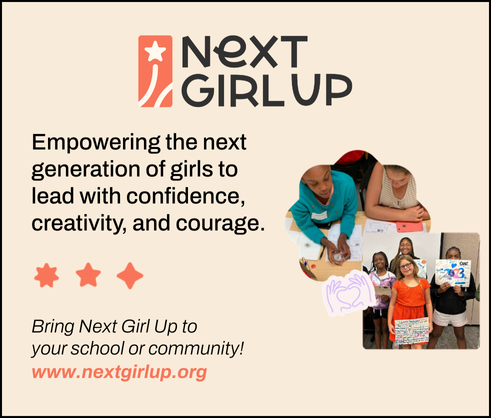PERSPECTIVE: Philanthropy Can Respond to Anxiety, Alienation and Adversity
/by Ambassador James A. Joseph [Part Two]
Think first of the anxiety so many people feel. There have been moments of great anxiety before. The period after 9/11 was such a moment. The period after the assassination of John F. Kennedy and Martin Luther King was such a moment. But psychologists have called the present moment a period of free-floating anxiety in which the anxiety we feel is not the result of one event, but a confluence of events.
The present mood runs the gamut from anxiety about the lingering effects of the economic free fall we faced a few years ago to anxiety about what violent conflicts are doing to our soul as a people; from anxiety about the new meanness in public life to anxiety about whether the increasing tendency to use the public square to promote private interests will lead to an eclipse of the very idea of a public good. Many people have become so anxious that they are anxious about the fact they are anxious.
Occasionally, there are those moments when our spirits are uplifted and the dream of a more perfect union seems within our reach. Those are the moments when we romanticize Nelson Mandela’s call for reconciliation; when we remember Martin Luther King’s admonition to respect the humanity of the adversary; and when we revel in what President Obama called amazing grace, the spirit we saw in South Carolina when a horrendous act of violence hoping to cause a race war had the opposite effect.
But while public acts of forgiveness and grace may be seductive, while they empower the victim of violence and can disarm the perpetrator, they are rather limited unless they lead to a larger social transformation that involves individual, political and economic change. And that is why Desmond Tutu and others in South Africa who are still revered around the world, now speak of the fundamental deficit in their democracy as the failure to achieve economic reconciliation.
So if the first element of the emotion we see and feel is anxiety, the second is alienation. Reconciliation is difficult because too many of us look at diversity and want to homogenize it to fit our comfort zone. Many good people with the best intentions fail to understand the difference between the individual as actor and our institutions as agents. A recent poll found, for example, that white Americans, by a two-to-one margin, believe that where racism is a problem, it is a problem of biased individuals. People of color who were surveyed were more likely to be concerned about biased institutions.
 However, it is not just the alienation of population groups from each other that concerns me. I have spent much of the last twenty years in South Africa and one of the things I learned is that enduring reconciliation is not possible without eliminating historical illusions, dismantling deceptions and coming to grips with mis-teachings.
However, it is not just the alienation of population groups from each other that concerns me. I have spent much of the last twenty years in South Africa and one of the things I learned is that enduring reconciliation is not possible without eliminating historical illusions, dismantling deceptions and coming to grips with mis-teachings.
The poet William Wadsworth put it best when he wrote that the only thing worse than being untaught is to be mis-taught. I also learned in South Africa what we are now learning in the United States, how public symbols affect public memory and how they can be used to shape a sense of belonging or alternatively foster a feeling of alienation.
Those who write about building or re-building community are the first to remind us that Americans disagree about who we are because we cannot agree about what we have been. We are at odds over the meaning of our own history, over the sources of our national strength, over what it is philosophically and spiritually that make us Americans. We are alienated not just from each other but from our past as well.
There is much made of the meanness tearing at the fabric of both national and international life. The anger we see is often the result of not just anxiety and alienation but adversity as well. Disaster is also a part of the new normal. Many people in many parts of our country and our world live with either the consequence of a prior adversity or walk in the shadows and anticipation of a future adversity. Some live in a constant rage about went wrong in a previous disaster. They are the ones who look for scapegoats rather than solutions.
There are others who live with the fear of a future disaster but they have known adversity before so they respond with a kind of resilience that engages it rather than being consumed by it. I grew up in Louisiana and I served later as chair of the Louisiana Disaster Recovery Foundation in the aftermath of Hurricane Katrina, so I know something about the resilience of Louisiana’s people. I can still hear ringing in my ears a favorite quote of my father who liked to say that the soul would have no rainbows, had the eyes no tears. He was defiant rather than defeated because he looked at adversity and saw not so much the tears as the potential for rainbows.
Disaster challenges philanthropy in a very special way. My experience with Hurricane Katrina was that while private donors pro vided millions of dollars for relief and governments provided billions for recovery, neither sector provided very much for reform. And yet it is this third stage that can have the most enduring impact. It can help sustain the public attention to what remains to be done and it can help change policies and practices that may have contributed to the disaster in the first place.
vided millions of dollars for relief and governments provided billions for recovery, neither sector provided very much for reform. And yet it is this third stage that can have the most enduring impact. It can help sustain the public attention to what remains to be done and it can help change policies and practices that may have contributed to the disaster in the first place.
My concluding observation then is that the present mood and the present moment in our communities and throughout the nation is a time when we need leaders in philanthropy who are willing to take risk and leaders who are not afraid to stand for something. I have been a leader and I have been a manager. As a manager, I prized order, but as a leader I had to be willing to risk chaos.
If those of us engaged in philanthropy are to help reimagine and reaffirm the centrality of community in the American story, if we are to be agents of reconciliation and purveyors of hope, we will need to take risks that may disturb our comfort zone; but I know from my experience that times of crisis are also times of opportunity and that when you provide help you also provide hope.
This is a moment when not just individuals but the entire civic sector will need to lead again. It is a moment when philanthropy will need to act wisely and boldly, without fear or timidity. It is not enough to simply lament the deficit of leadership in our public life. You have it within your power to be the authors of not only a new narrative, but the architects of a new age.
So I conclude these observations about the pursuit of connection and cohesion with a vision of community that has been my constant companion since the day I first pondered how to build community by design. Some of you may have heard it before. It comes from the writings of the mystic, theologian and poet Howard Thurman, who was fond of saying “I want to be me without making it difficult for you to be you.” There is no better way of thinking about building and sustaining community.
 I wrote my recently published book because I wanted the reader to imagine what the future community would be like if each of us were able to say “I want to be me without making it difficult for you to be you.”
I wrote my recently published book because I wanted the reader to imagine what the future community would be like if each of us were able to say “I want to be me without making it difficult for you to be you.”
I wanted readers to imagine what our world would be like if more Americans were willing to say I want to be an American without making it difficult for an Asian to be an Asian, an African to be an African or a Latin American to be a Latin American. I wanted readers to imagine what our communities would be like if more Christians were able to say I want to be a Christian without making it difficult for a Jew to be a Jew, a Muslim to be a Muslim, a Buddhist to be a Buddhist or a Hindu to be a Hindu.
I hope that if you remember nothing else I said today, you will leave here saying to all in hearing distance “I want to be me without making it difficult for you to be here.”
__________________________________________
Ambassador James A. Joseph is professor emeritus of the Practice of Public Policy at the Sanford School of Public Policy at Duke University. The president of the Council on Foundations from 1982-1995, he has served in senior executive or advisory positions for four U. S. presidents, including Undersecretary of the Interior for President Jimmy Carter and Ambassador to South Africa for President William Clinton. His most recent book is “Saved for a Purpose,” published by the Duke University Press. This piece is excerpted from his keynote address delivered at the Connecticut Council on Philanthropy annual Luncheon and Conference on May 13, 2016. ©
Part I of Ambassador Joseph’s remarks were published last Sunday in perspeCTive.


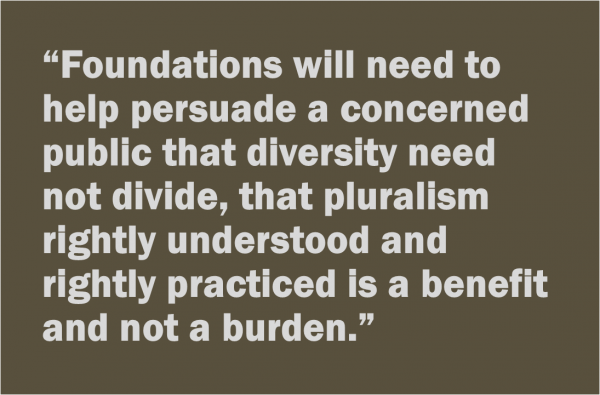 when strangers help strangers both those who help and those who are helped are transformed. When that which was their problem becomes our problem, the connection that is made has the potential for new forms of community. In other words, when you help someone who is homeless to find a home, when you help someone who is hungry to find food, when you help someone to find meaning in a painting or sculpture, when you help someone to fight bigotry or to find a job, you will be laying the groundwork for the genesis of community.
when strangers help strangers both those who help and those who are helped are transformed. When that which was their problem becomes our problem, the connection that is made has the potential for new forms of community. In other words, when you help someone who is homeless to find a home, when you help someone who is hungry to find food, when you help someone to find meaning in a painting or sculpture, when you help someone to fight bigotry or to find a job, you will be laying the groundwork for the genesis of community.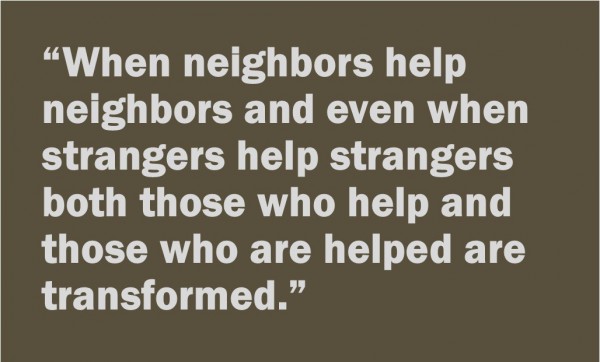
 here they do business in Europe and elsewhere. At least 82 UK-based companies are currently doing business in Connecticut.
here they do business in Europe and elsewhere. At least 82 UK-based companies are currently doing business in Connecticut.
 out the economic future.
out the economic future. interest:
interest: 

 Constant alertness is needed on a job site. Cars and pedestrians can appear quickly, seemingly out of nowhere, so both painter and assistant need to watch and listen attentively, especially when the paint machine is running. Reflective vests and pants are a safety must, and a flashlight should be hooked onto your clothing as well, to be ready at all times.
Constant alertness is needed on a job site. Cars and pedestrians can appear quickly, seemingly out of nowhere, so both painter and assistant need to watch and listen attentively, especially when the paint machine is running. Reflective vests and pants are a safety must, and a flashlight should be hooked onto your clothing as well, to be ready at all times. is is a significant omission.
is is a significant omission.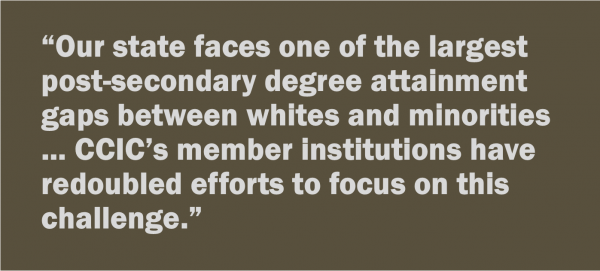


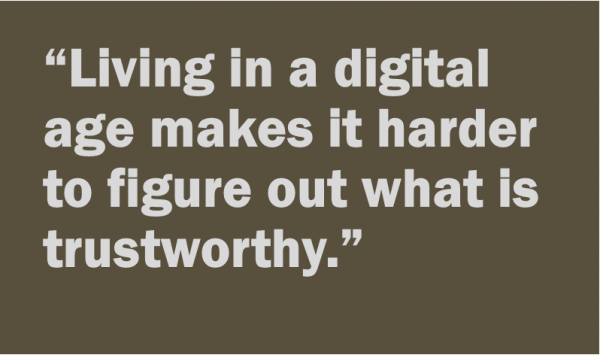 To those of us who look to – or up to – them, we need an open, inquiring, compassionate mind. We need to set aside the rush to judgement, to listen to all sides of an issue, to take the time to search out the truth, to separate the hype from the reality.
To those of us who look to – or up to – them, we need an open, inquiring, compassionate mind. We need to set aside the rush to judgement, to listen to all sides of an issue, to take the time to search out the truth, to separate the hype from the reality.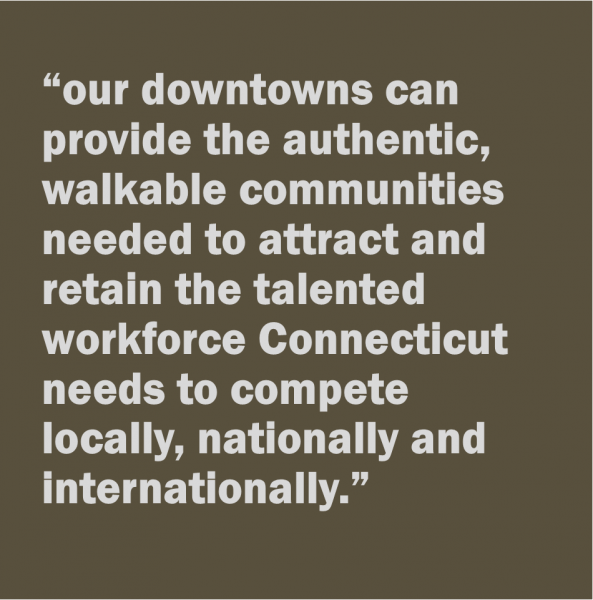 le, more active and transit-accessible downtowns. At the same time, an increasing demand for downtown living is paralleled with a general lack of diverse and affordable housing choices. Upper story space in existing older buildings is vacant and available, but expensive to renovate.
le, more active and transit-accessible downtowns. At the same time, an increasing demand for downtown living is paralleled with a general lack of diverse and affordable housing choices. Upper story space in existing older buildings is vacant and available, but expensive to renovate.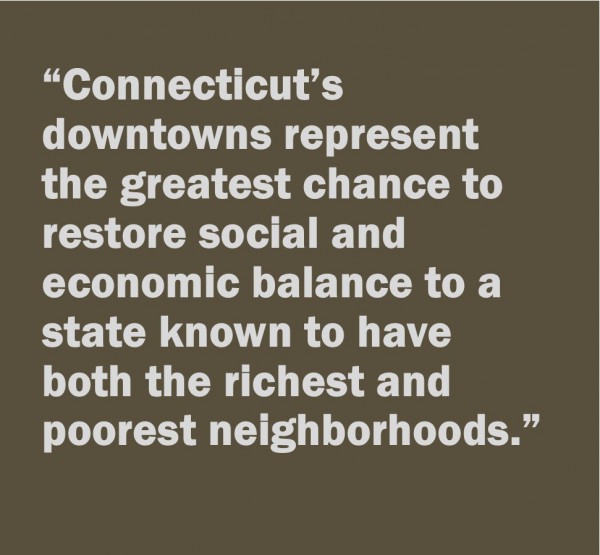 for policies and regulations that support and enhance our main streets, as well as identifying more and better models of downtown management, including training, education, and communication for downtown professionals. Championing sustainable financing for these downtown organizations will also be a priority.
for policies and regulations that support and enhance our main streets, as well as identifying more and better models of downtown management, including training, education, and communication for downtown professionals. Championing sustainable financing for these downtown organizations will also be a priority.
 rly lost her life due to the carelessness and irresponsibility of a negligent driver who failed to obey the stop sign and also failed to avoid colliding with a cyclist. My wife’s journey to this date has been exceedingly long and tortuously painful. She has endured nearly 30 arduous surgeries and has been left with a body and mind crippled with pain and post traumatic stress.
rly lost her life due to the carelessness and irresponsibility of a negligent driver who failed to obey the stop sign and also failed to avoid colliding with a cyclist. My wife’s journey to this date has been exceedingly long and tortuously painful. She has endured nearly 30 arduous surgeries and has been left with a body and mind crippled with pain and post traumatic stress. organize a bike tour to raise money for their program. Nearly 10 months later, the bike tour raised $12,000, which went toward purchasing four recumbent bicycles.
organize a bike tour to raise money for their program. Nearly 10 months later, the bike tour raised $12,000, which went toward purchasing four recumbent bicycles.




